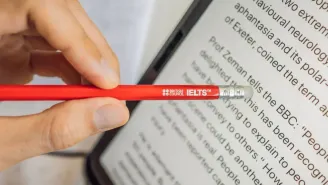South Pole Adventurer Reading Answers Passage
South Pole Adventurer Reading Answers Passage
Paragraph 1. There was a Japanese team led by heroic explorer Nobu Shirase attempting to be first in a race to the South Pole.
Paragraph 2. In January 1912, Antarctica was filled with explorers for a few weeks. On December 14th, Norwegian Roald Amundsen had reached the South Pole and went back to the coast. Robert Scott and the men of the British Antarctic expedition had arrived at the pole on 17 January to find out that they had been beaten to it. A third man then arrived – a Japanese explorer named Nobu Shirase. His part in one of the greatest adventure stories of the twentieth century is not known much outside his own country, even by fellow explorers. Shirase and his team sailed into Antarctica’s Bay of Whales in the smallest ship ever to try its luck in these dangerous waters as Scott was nearing the pole and with the rest of the people not aware of Amundsen’s triumph. Since childhood Shirase had wanted to become a polar explorer. He initially planned to go to the North Pole like Amundsen. But both men quickly changed their plans after the American Robert Peary claimed to have reached it in 1909. Instead, they went to the South Pole. In January 1910, Shirase promised to raise the flag at the South Pole within 3 years and put his plans before Japanese government officials. The question for many of them wasn’t whether he could do it but why it would be worth doing? The International Geographical Congress had said 15 years before that Antarctica, the last unknown continent, offered the chance to add to knowledge in almost every branch of science. Like the British, Shirase presented his expedition as a search for knowledge, making meteorological measurements and exploring unknown parts of the continent; he would bring back fossils.
Paragraph 3. Before Shirase, the British team declared their decision to carry out scientific research in Antarctica.
Paragraph 4. Even though the response from the government was positive, Shirase found it difficult to raise funds. Luckily, a few months later, Japan’s former prime minister, Shigenobu Kuma, came to Shirase’s rescue. Shirase got together just enough money to buy and equip a small ship with Kuma’s help. Later he eventually got a scientist named Terutaro Takeda. His ship, the Kainan Maru, finally left Tokyo at the end of November 1910 with 27 men and 28 Siberian dogs on board. Shirase confidently outlined his plans to the media before leaving. First, he would sail to New Zealand in a ship, and during the southern summer in February, he would go to Antarctica and then proceed to the South Pole during the spring. But bad weather was a hurdle to the expedition, and they reached New Zealand only by 8th February. By that time, Amundsen and Scott had reached Antarctica a month before and were preparing for winter.
Paragraph 5. Local reporters in New Zealand were surprised because his ship was only half the size of Amundsen’s ship. Although the ship was reinforced with extra wood and iron plate, the ship only had a small engine to go through the ice. Local reporters in New Zealand were surprised because his ship was only half the size of Amundsen’s ship. Although the ship was reinforced with extra wood and iron plate, the ship only had a small engine to go through the ice. On the one hand, some are suspicious about the Shirase’s courage. And, on the other hand, few considered that preparation for the journey was not good enough as they only had lightweight sledges made of bamboo and wood for transport across the ice.
Paragraph 6. The biggest challenge faced by him was time. Expeditions usually aimed to arrive in January or February as Antarctica is only accessible by sea for a few weeks in summer. ‘Our Japanese friends are running it fine with their determination and daring,’ wrote local reporters.
Paragraph 7. Kainan Maru, on February 11th, left New Zealand and went straight into the worst weather the captain had ever seen. They approached the coastline of Antarctica’s Ross Sea on March 6, looking for a place to halt. The ice began to surround them, which could trap them for the winter, an experience which no one would survive. The captain, who had a remarkable seamanship, steered north and escaped out of the ice. They would have to wait till the winter is over till the climate becomes warm again.
Paragraph 8. Shirase and 6 men finally reached Antarctica a year later. He had said he would stick to science this time, but catching up with Scott or Amundsen was out of the question. As he had always dreamed, Shirase still felt the pull of the pole and decided he would head southward to experience the thrills and hardships of polar exploration. With 4 men and provisions for 20 days, he would see how far they could get.
Paragraph 9. On 20 January 1912, Shirase set off with Takeda and 2 dog handlers, leaving 2 men at the edge of the ice shelf to make meteorological measurements. For a week, they struggled through repeated blizzards, hiding in their tents during the worst of the weather. The temperature went to -25°C, and frostbite claimed the lives of some dogs. Shirase estimated there were enough provisions on 26th January to continue for 2 more days. 2 days later, he announced it was time to turn back. Takeda calculated they had reached 80°5 south and had travelled 250 km. They hoisted the Japanese flag.
Paragraph 10. All the men returned home on 3rd February. In June 1912, when the ship reached Tokyo, Shirase was praised as a hero, although he never reached the pole. Also, he couldn’t contribute anything to science. Nor did Amundsen, whose only interest was to reach the pole first. But the expedition of Shirase was heroic. Only one of 4 teams have gone so far south beyond 80° south at the time. Also, they did all this without the advantages the other teams had and without any previous experience.
South Pole Adventurer Reading Answers with Sample Questions
Please read the South Pole Adventurer Reading Answers passage carefully and answer the following questions. We’ve included answers below to help you out. Give it your best shot!
Check Out Top 10+ IELTS Reading Practice Test Questions with Answers
Below are some top free IELTS Reading Practice test online questions with detailed answers to enhance your IELTS preparation online. We have provided sample passages for each test type for your reference.
- Twist In The Tale Reading Answers
- Sleep Reading Answers
- Climate Change Reveals Ancient Reading Answers
- Left Or Right Reading Answers
- Pottery Production In Ancient Akrotiri Reading Answers
- Flawed Beauty Reading Answers
- The Hollywood Film Industry Reading Answers
- The Changing Role Of Airports Reading Answers
- Koalas Reading Answers
- Science In Space Reading Answers







